Building a Repair Culture at École des Arts Décoratifs
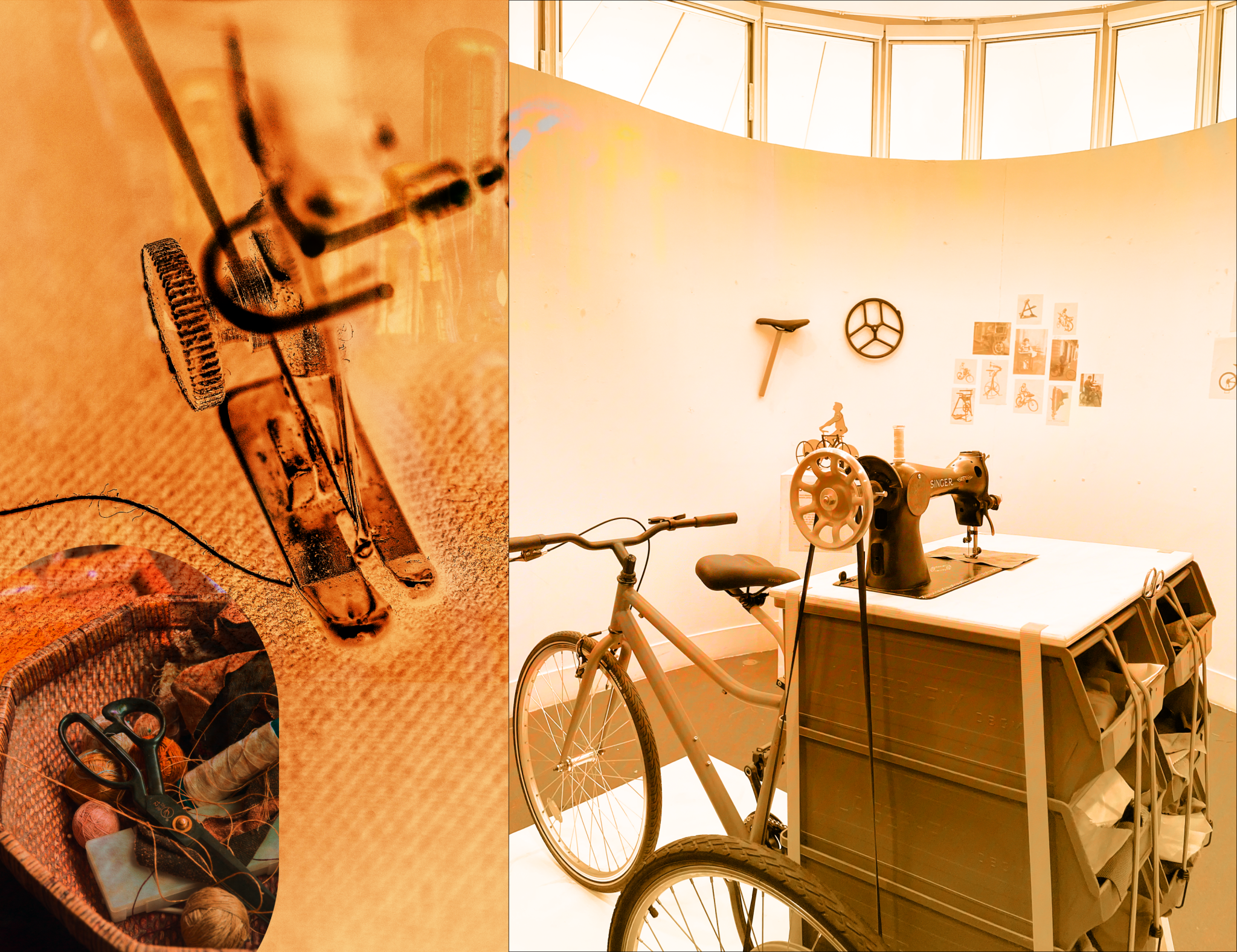
Last Tuesday we assisted to the Chaire Écodesign & Création. Restitution: Désirabilité et réparabilité des objets pour 2042 at the École des Arts Décoratifs in Paris. We witnessed many interesting projects about reparability on product design.
The background
With the guidance of the teacher Alexandre Fougea and the supervision of the design studio Noir Vif, this forward-looking approach and the importance of reflection have enabled students to come up with bold solutions that combine tangible objects addressing the issue of repairability and usage or service scenarios that contextualise their relevance.
Noir Vif is a design studio founded by André Fontes and Guillaume Lehoux in 2011, specialising in the creation of products and objects for new uses or markets. The two experienced designers complement their point of view with André’s experience as an engineer and Guillaume’s master’s degree in innovative design methods from ENSAM Paris.
This project is a partnership between DECATHLON and the École des Arts Décoratifs, where they are working together to support young designers in creating forward-looking projects that align with their values. The business is committed to listening and understanding the proposals of the new generations in order to address the challenges of the ecological transition, with exciting new ideas.
The exciting projects
The first group of students presented an innovative project at the exhibition called One Patch, One Story. The project focuses on creating value in repaired garments, rather than simply discarding them. The concept involves repairing clothes using patches that tell a unique story. For instance, if a jacket is torn during a hiking trip, it will be fixed with a patch featuring a cute design of the mountains. The students’ main aim is to give each item of clothing a symbolic story by adding these patches. This approach not only promotes sustainable fashion but also adds a personal touch to the clothing, making it more special to the wearer.
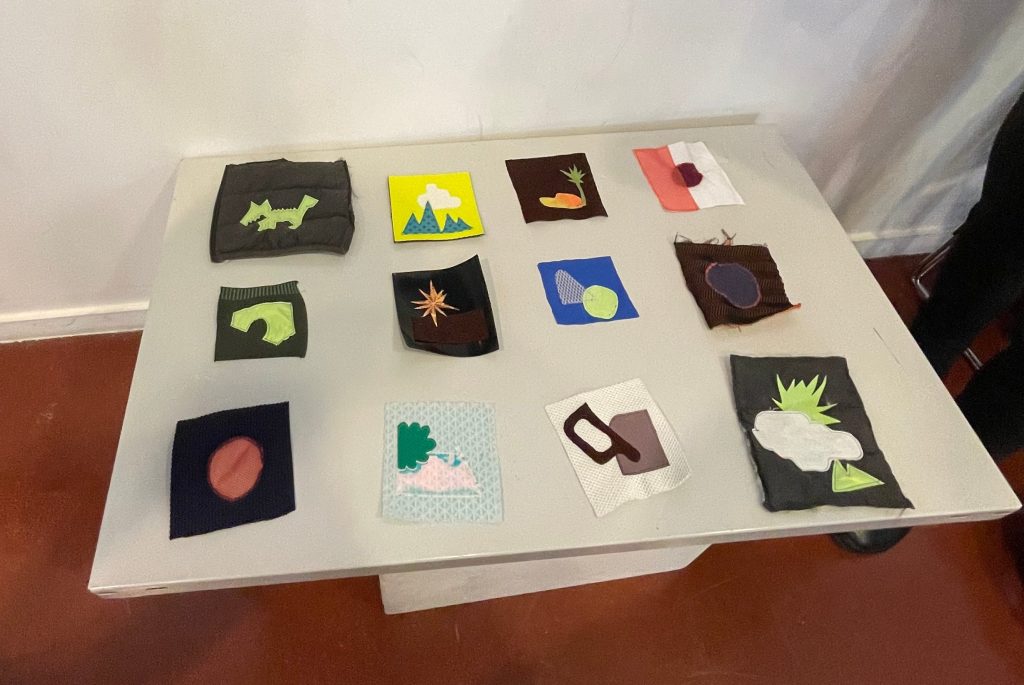
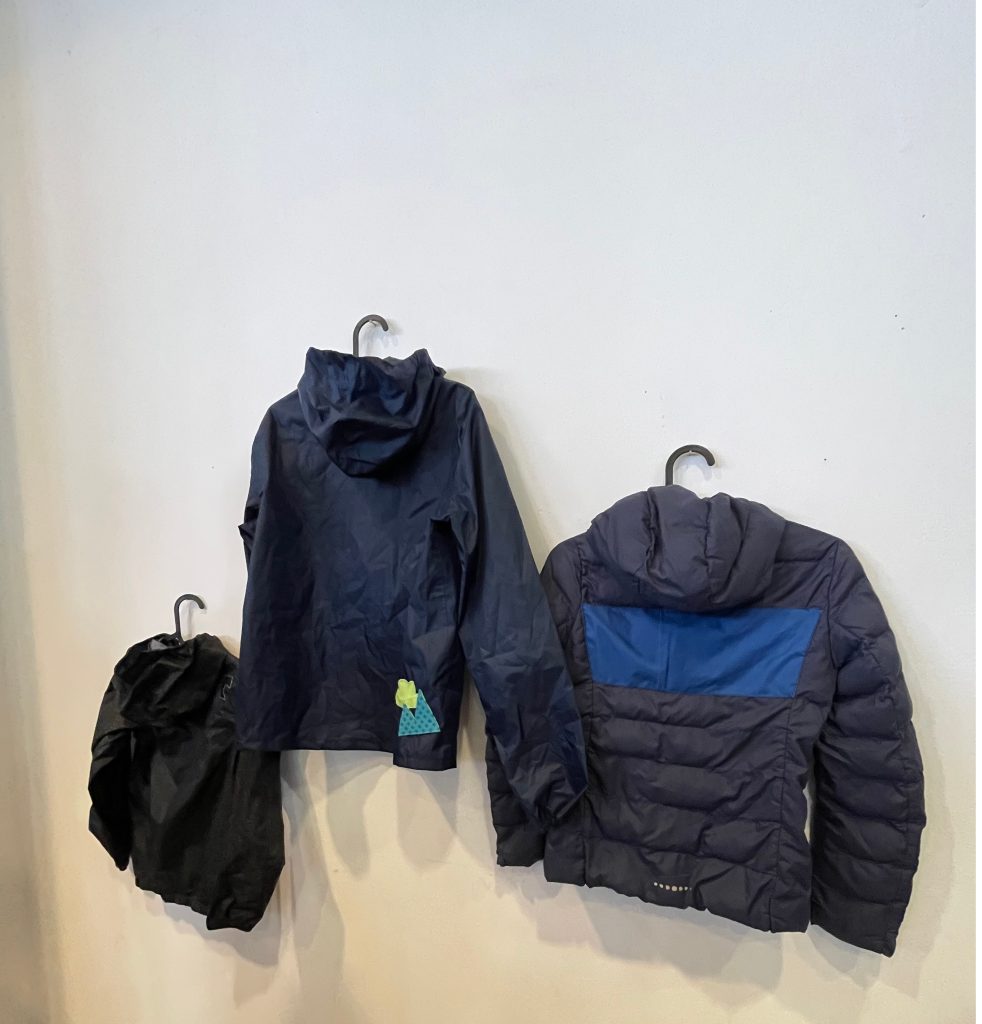
Another noteworthy project showcased at the exhibition featured easily disassembling chairs designed for both indoor and outdoor use. The creators sought to introduce outdoor furniture into indoor spaces with more eco-friendly materials that can be easily replaced. By using sustainable materials, they hope to minimise the environmental impact of furniture production.
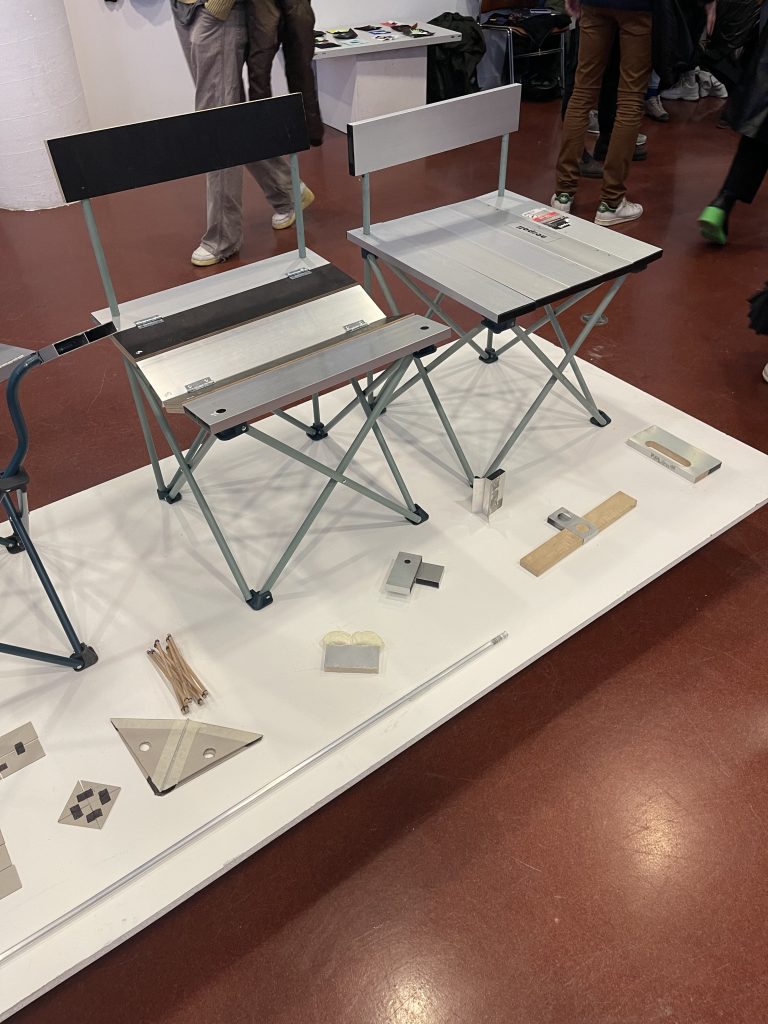
The third group showcased a smartly designed bag and tent that use some of the same key components in their construction. This approach allows for quick and efficient repairs to be made in case of damage to either item. For example, if the tent breaks, the backpack contains interchangeable parts that can be easily swapped out for a speedy and straightforward fix. Similarly, if the backpack needs repairs, the tent has components that can be used to address the issue. This innovative project promotes sustainability by reducing the need for multiple sets of equipment and encourages outdoor enthusiasts to invest in durable and long-lasting gear that can be repaired rather than replaced.
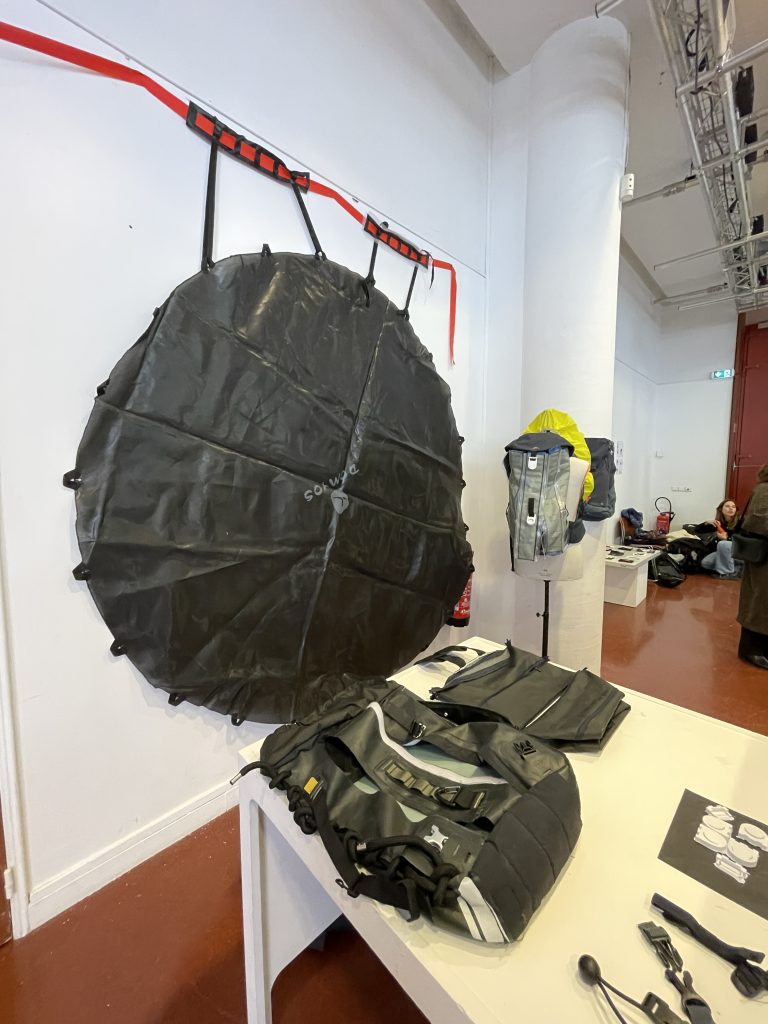
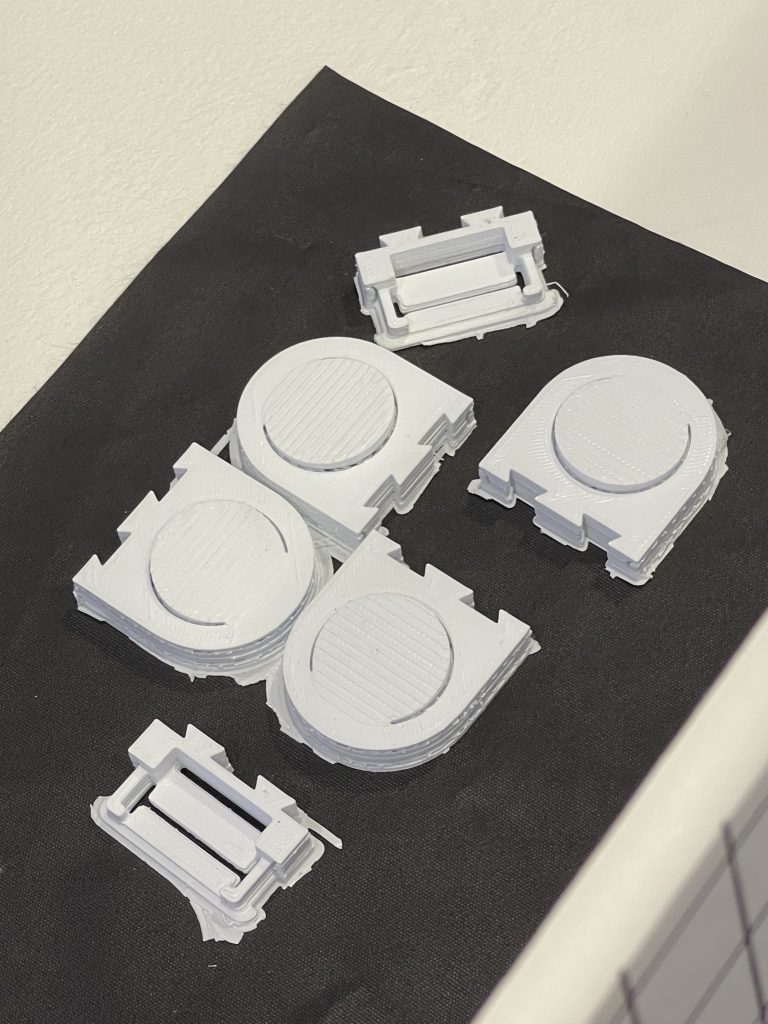
The fourth group’s presentation was one of the most captivating innovations at the exhibition — a unique concept called Coucou! that transforms a bicycle into a mobile sewing machine. While the idea of a mobile repairer is not entirely new, this particular implementation is both practical and efficient. The concept maintains the sporty aspect of cycling while repairing by using the bicycle to power the sewing machine, creating a unique and eco-friendly solution for on-the-go repairs. The saddle is inverted from the traditional bike configuration, allowing the user to pedal in the opposite direction to operate the sewing machine. This vintage-inspired concept promotes sustainability by offering a way to repair clothing anywhere, using a system that can travel with ease.
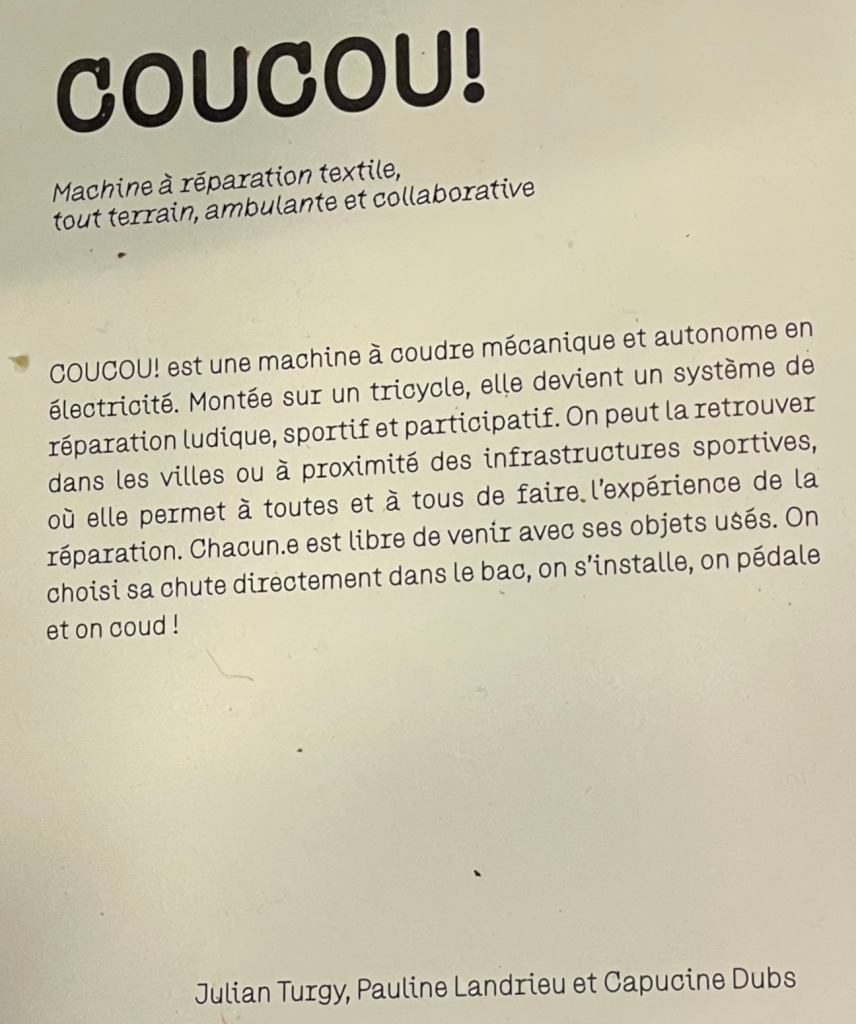
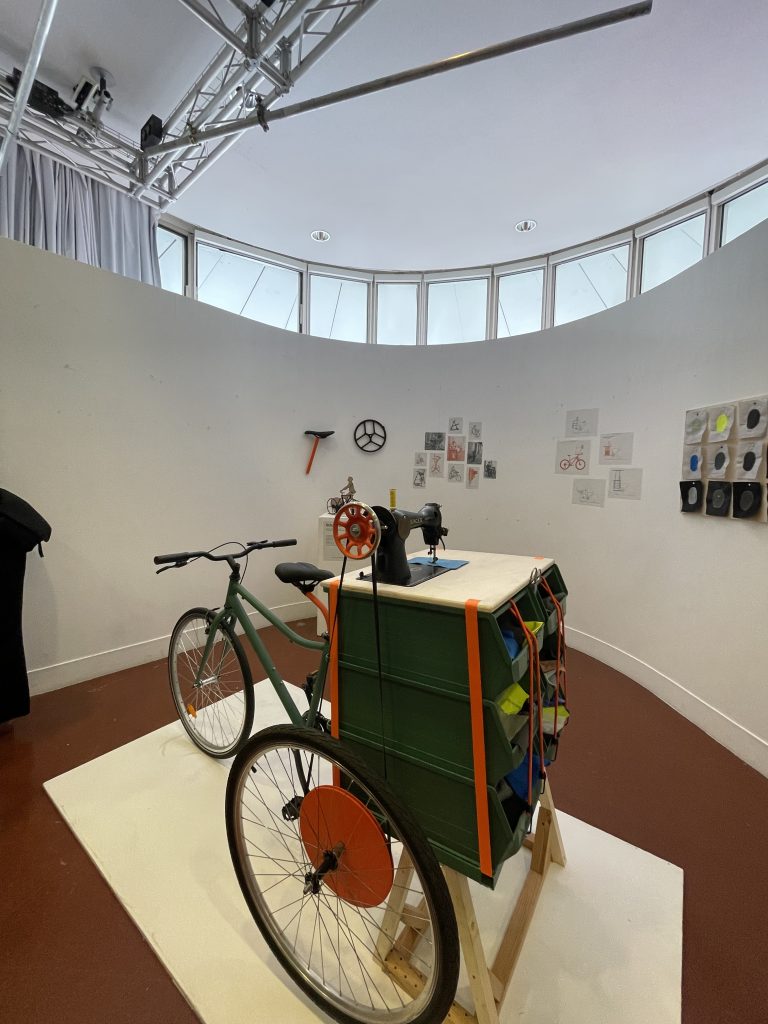
The fifth group of students presented an engaging project designed for children, aimed at encouraging their creativity and instilling the desire to tinker with objects. The concept revolves around do-it-yourself (DIY) activities that are safe for children and involve easy-to-use tools and explanatory models. The focus is on repairing objects, as well as elevating them by introducing multiple shapes and creating a collection concept. The idea is not only to provide a fun and educational activity for children but also to potentially spark an interest in repairs as a future vocation. This project offers a safe and accessible way to introduce children to basic repair skills, promoting a sense of accomplishment and self-sufficiency.
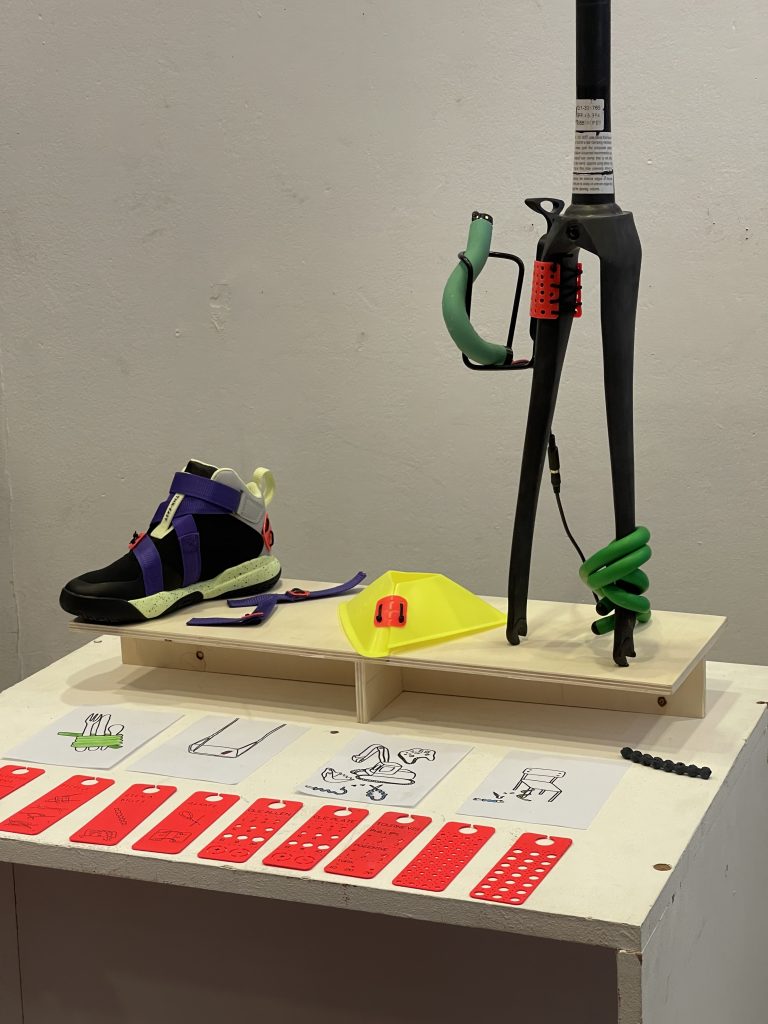
Guides and tools for reparing objects
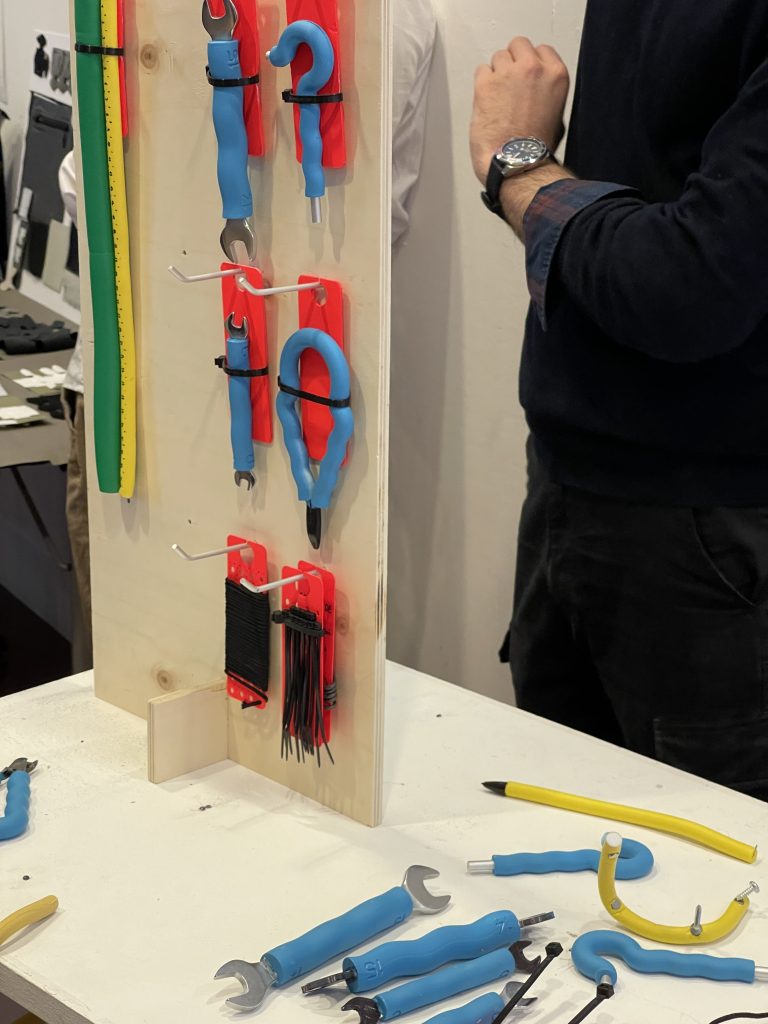
The following group presented an innovative concept of a bag that evolves over time, featuring detachable pieces that can be easily replaced, instead of buying a new bag each time. Their unique approach to bag design includes an assembly system with a basic module that builds the entire bag, as depicted in their designs. Additionally, the project features a modular design that allows for adaptability to different situations and moods, with a range of different pockets and colours to choose from, creating a unique style for each individual bag. The focus on sustainability and practicality is apparent in the design, with an emphasis on the ease of repair and longevity of the bag.
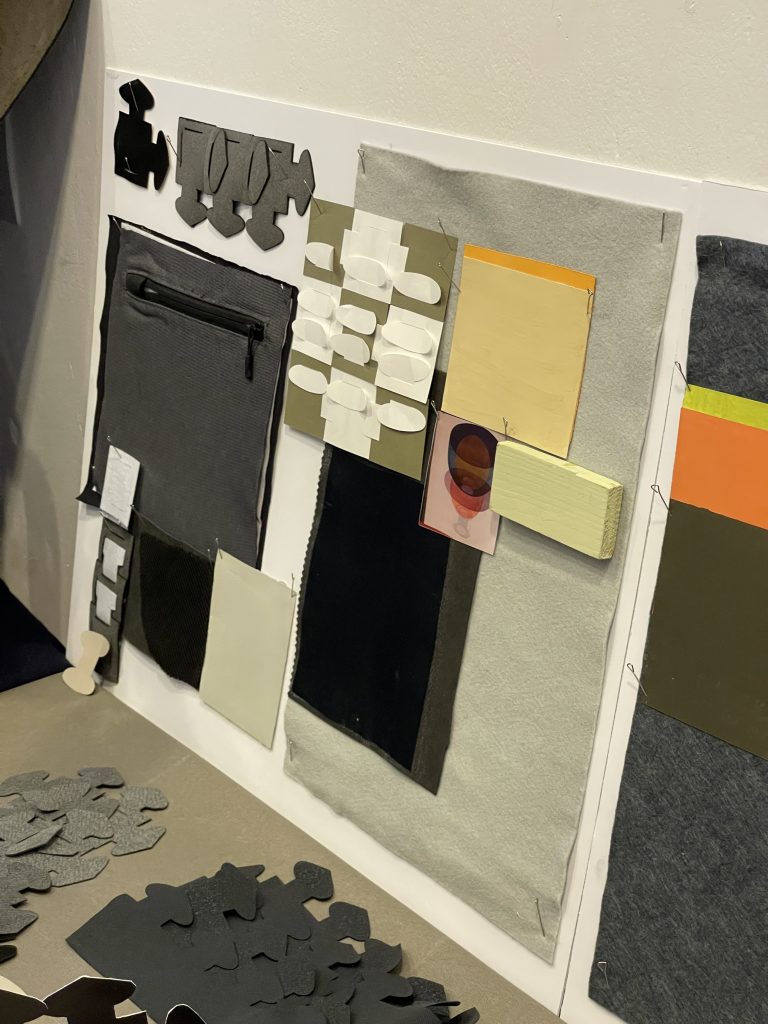
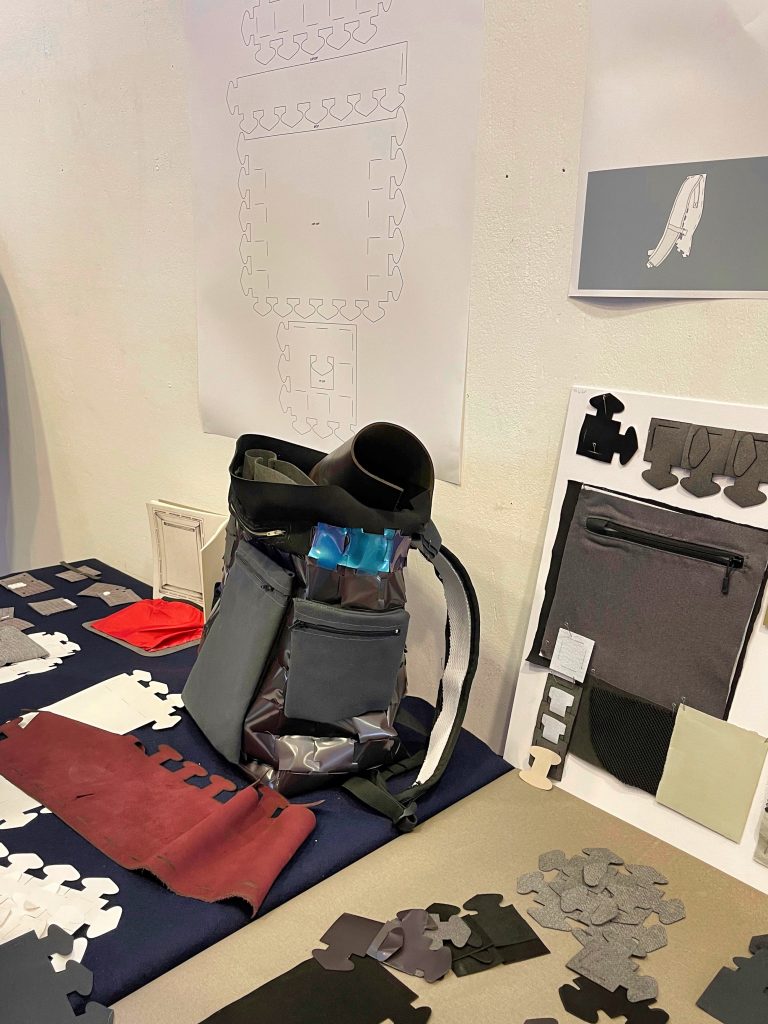
The last group of students presented an innovative solution to address the difficulties faced by individuals when repairing products due to lack of information. They introduced the concept of an NFC (Near Field Communication) label that contains all the necessary information about a product, including its composition and repair instructions. This solution aims to address the common problem of people in France who intend to repair their items but lack the necessary information to do so.
The group showcased a service that involves a machine that scans the NFC tag on a broken object to identify it and send it to the appropriate repair system based on its identification. They opted for NFC technology instead of RFID (Radio Frequency Identification) code, which is commonly used in the fashion industry, because NFC can hold more information and can also include a link to a website. Scanning the NFC tag provides the user with access to helpful videos and tutorials on how to repair their item without requiring professional assistance. This solution not only promotes sustainability but also empowers consumers to take charge of their repair needs, providing them with the necessary information and resources to extend the life of their products.
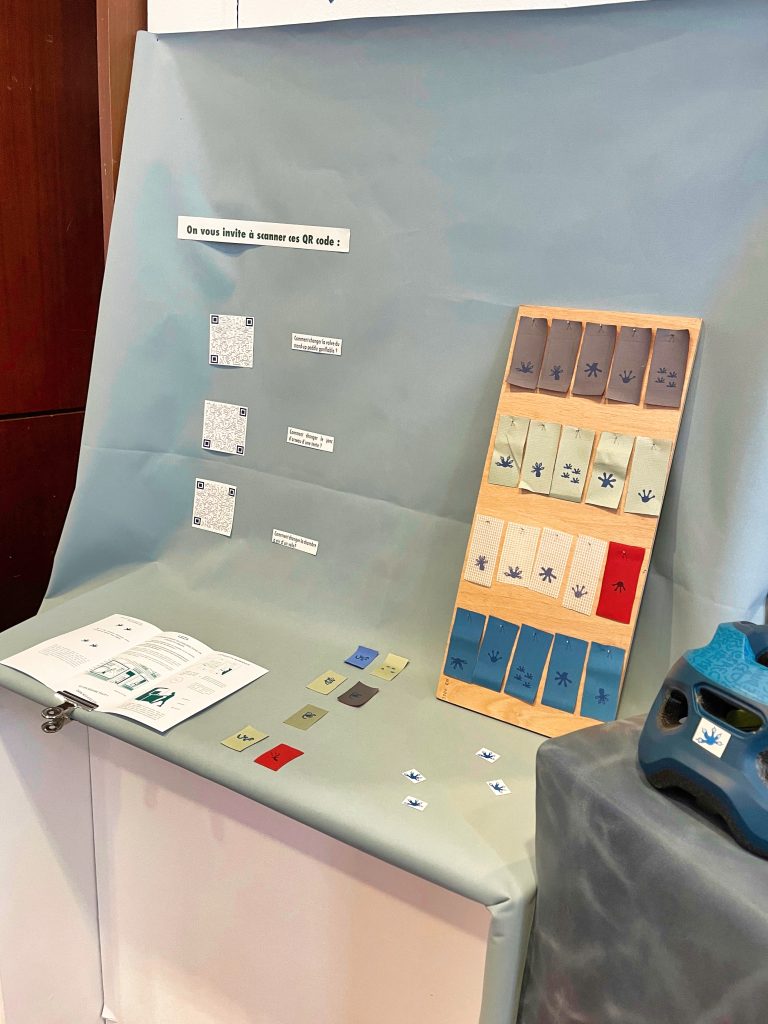
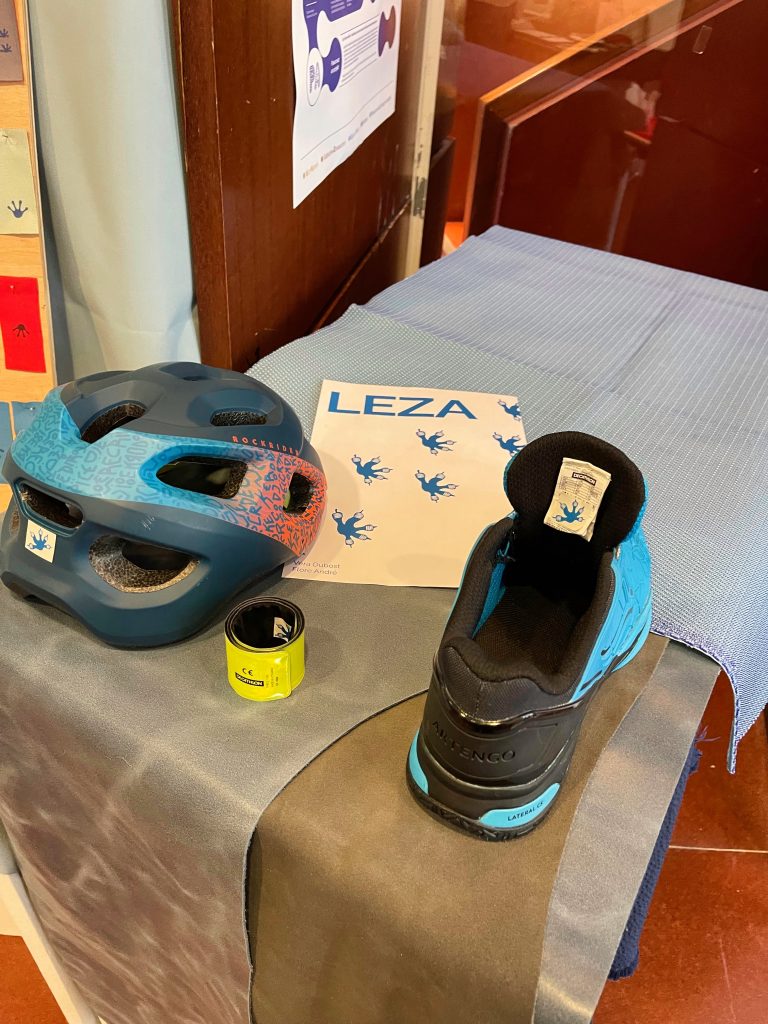
Sustainability. Towards The Future
These projects not only demonstrated the creativity and resourcefulness of the student but also reflected a growing awareness of the need for sustainable and adaptable designs that can withstand the test of time. As consumers become more conscious of their environmental impact, it is crucial that product design evolves to meet this demand. The projects provide an inspiring example of how design can be used to create a better future for all.
To learn more about trailblazing projects happening on the design industry, visit our dedicated section. Join our community of like-minded individuals who are passionate about ethical and pioneering design.


